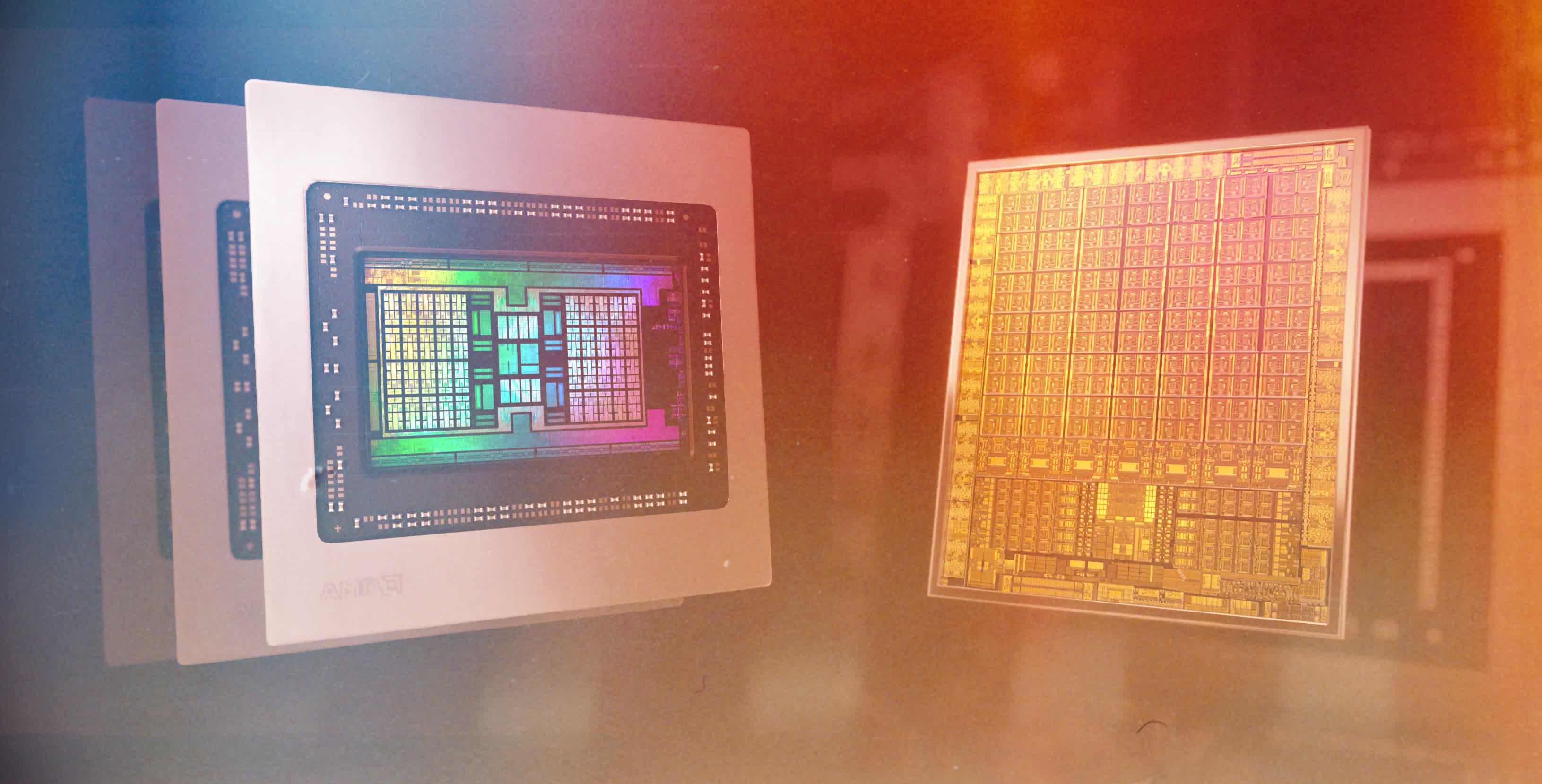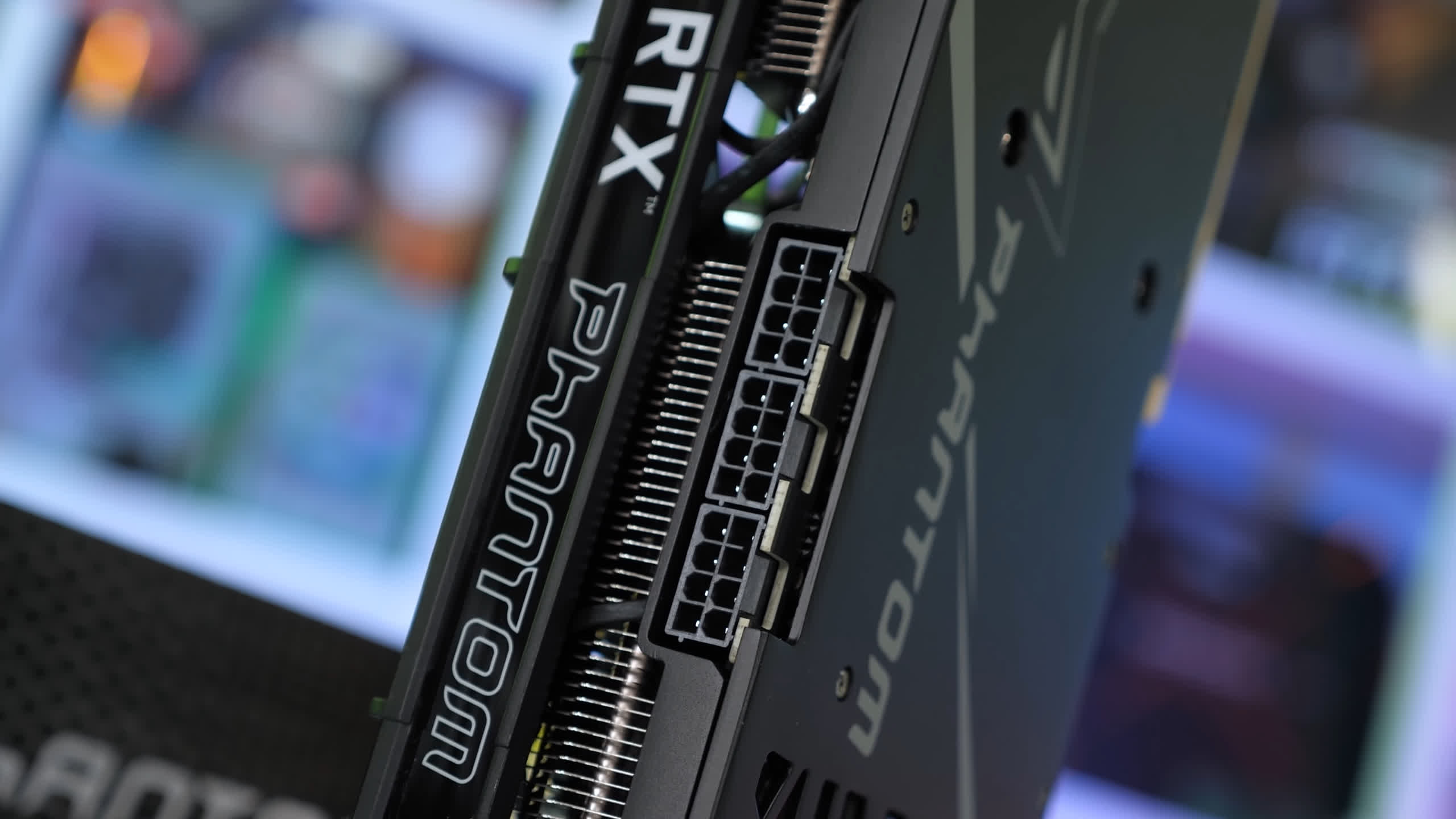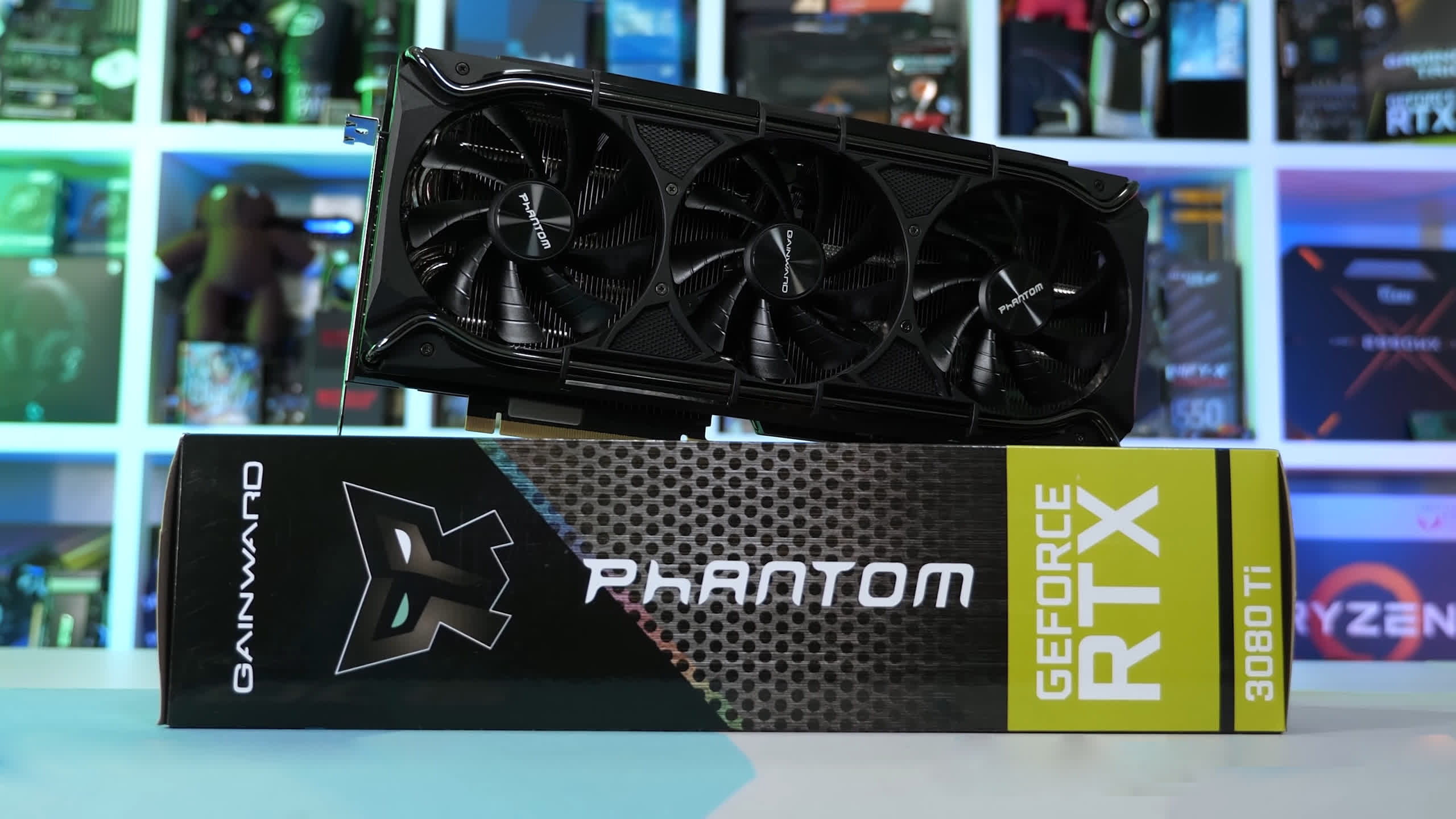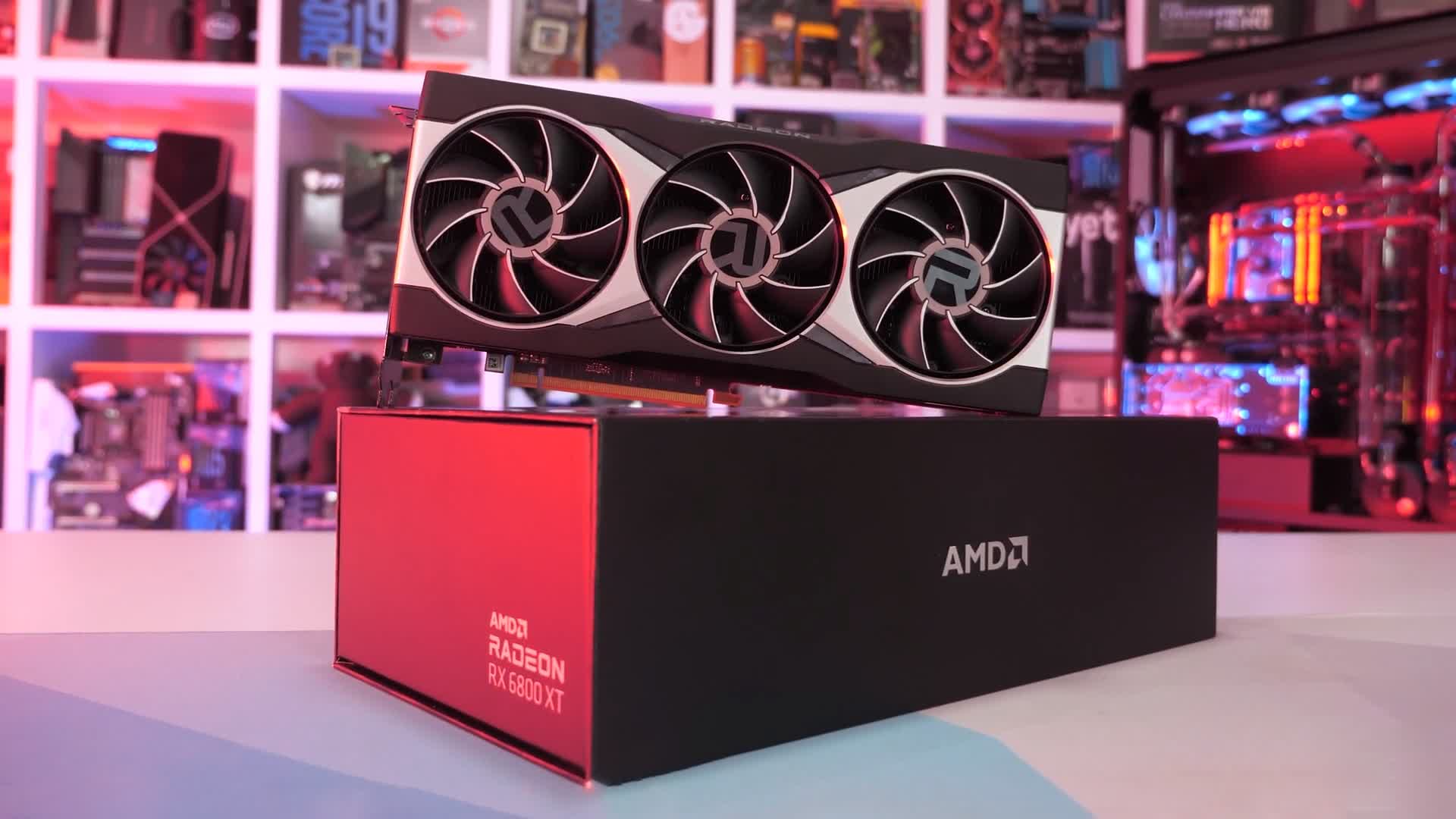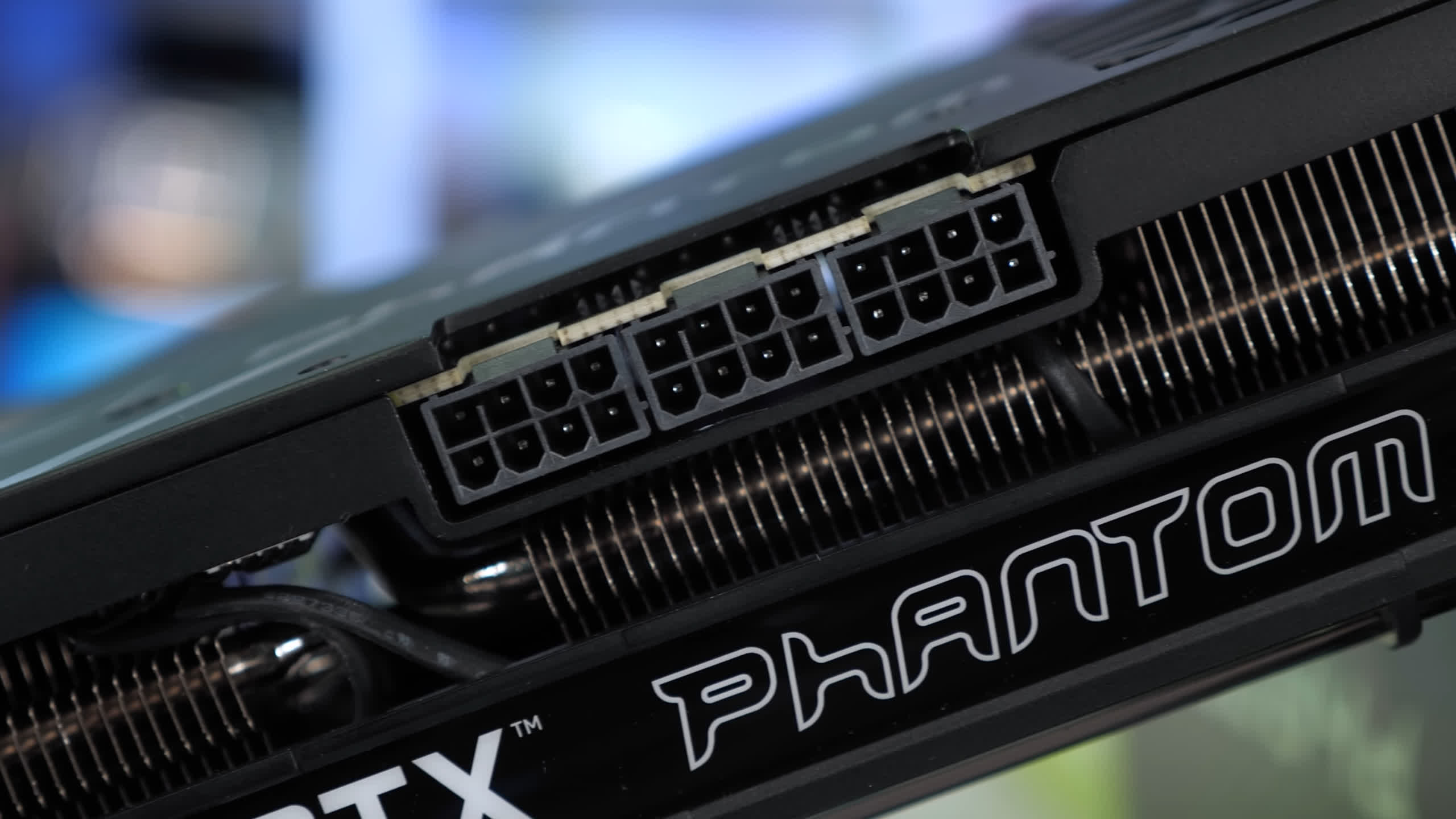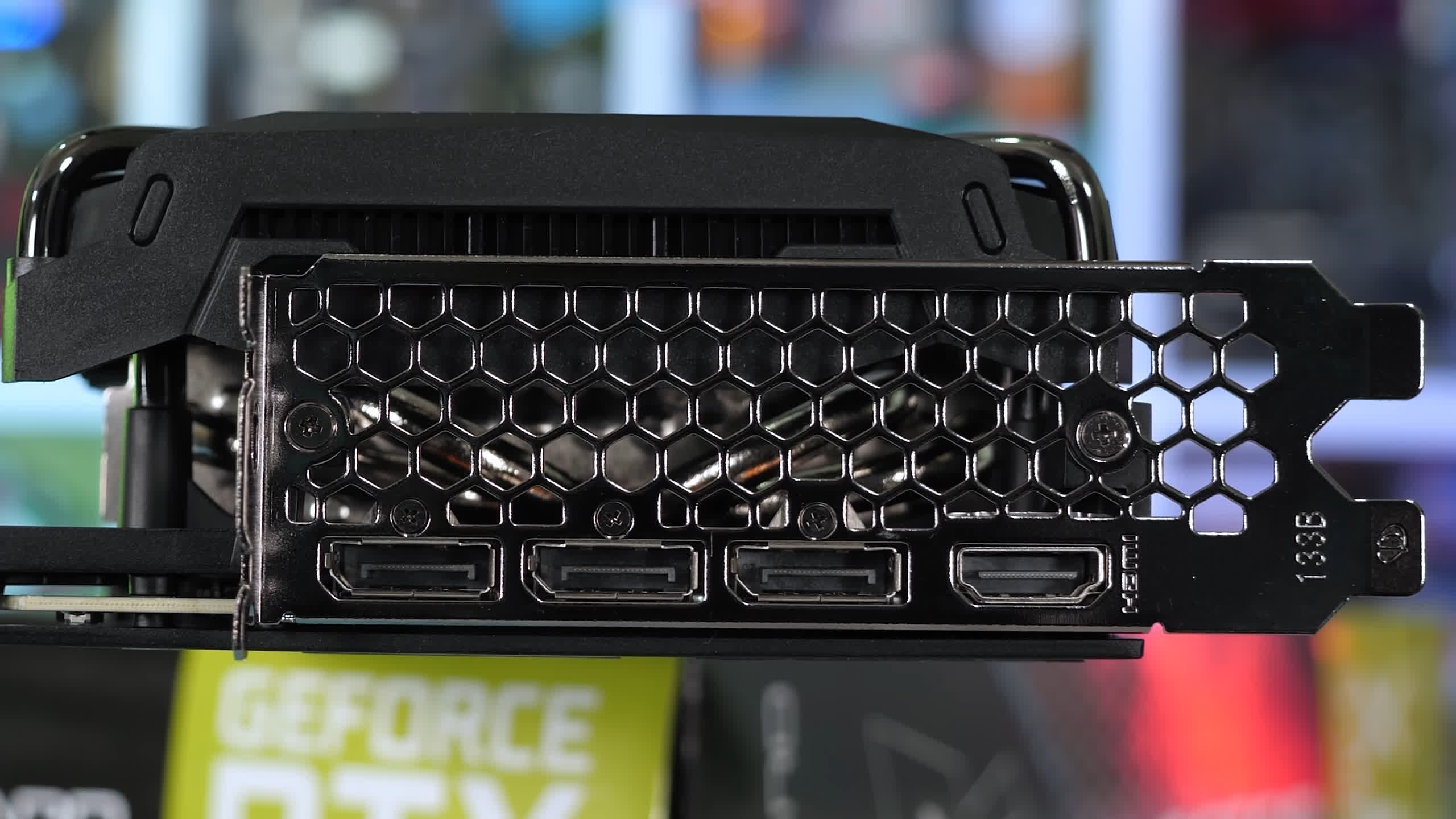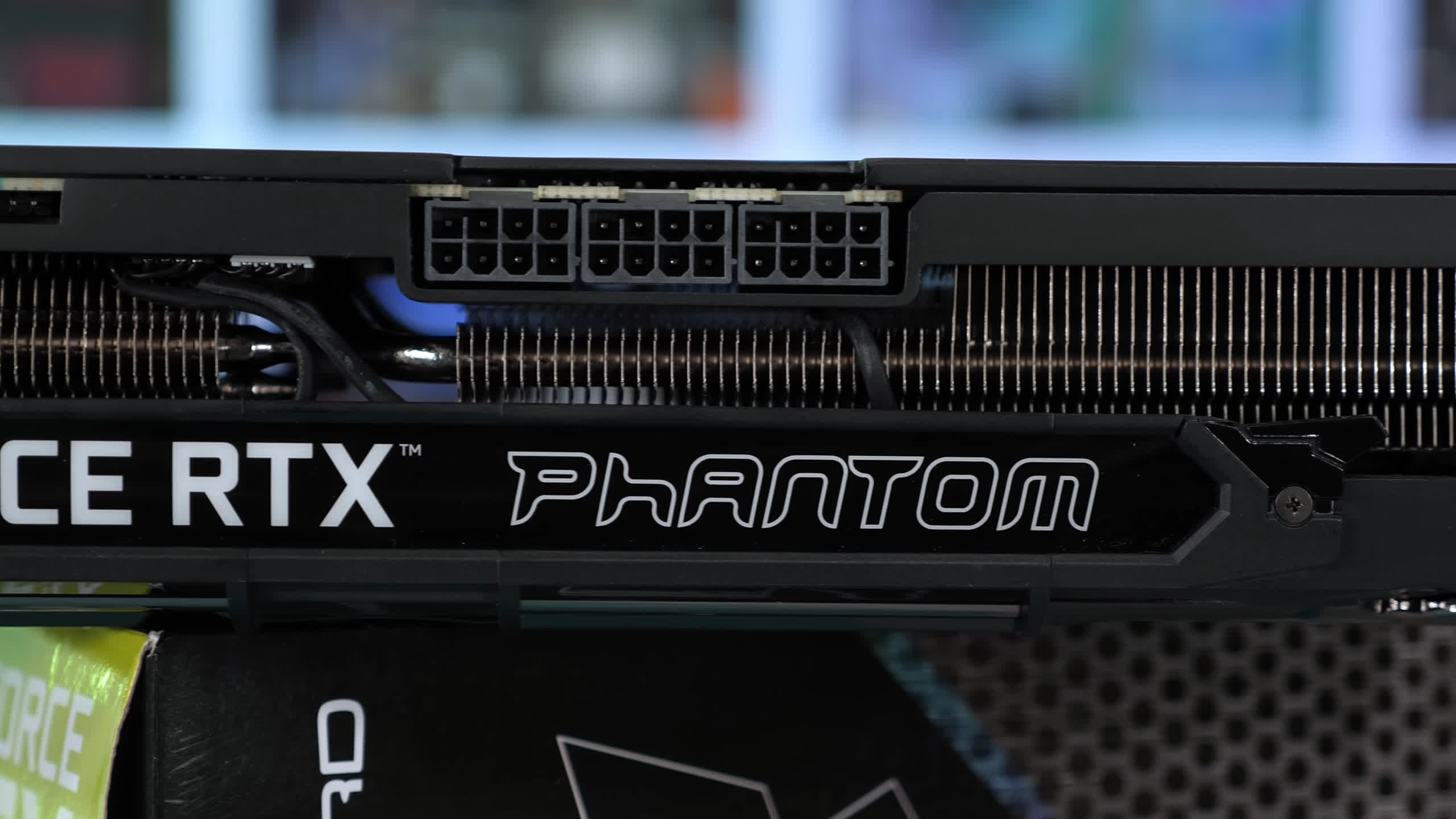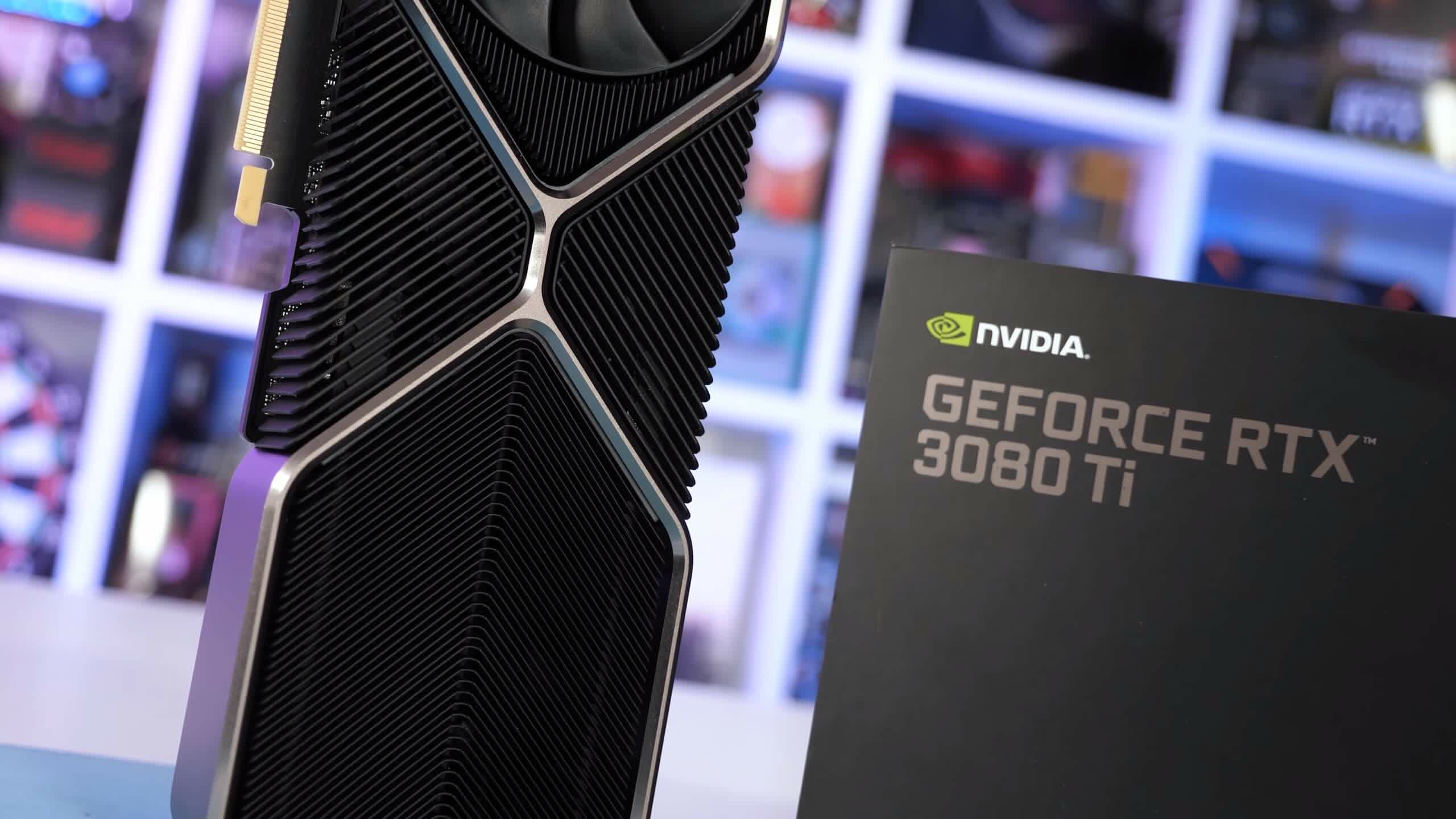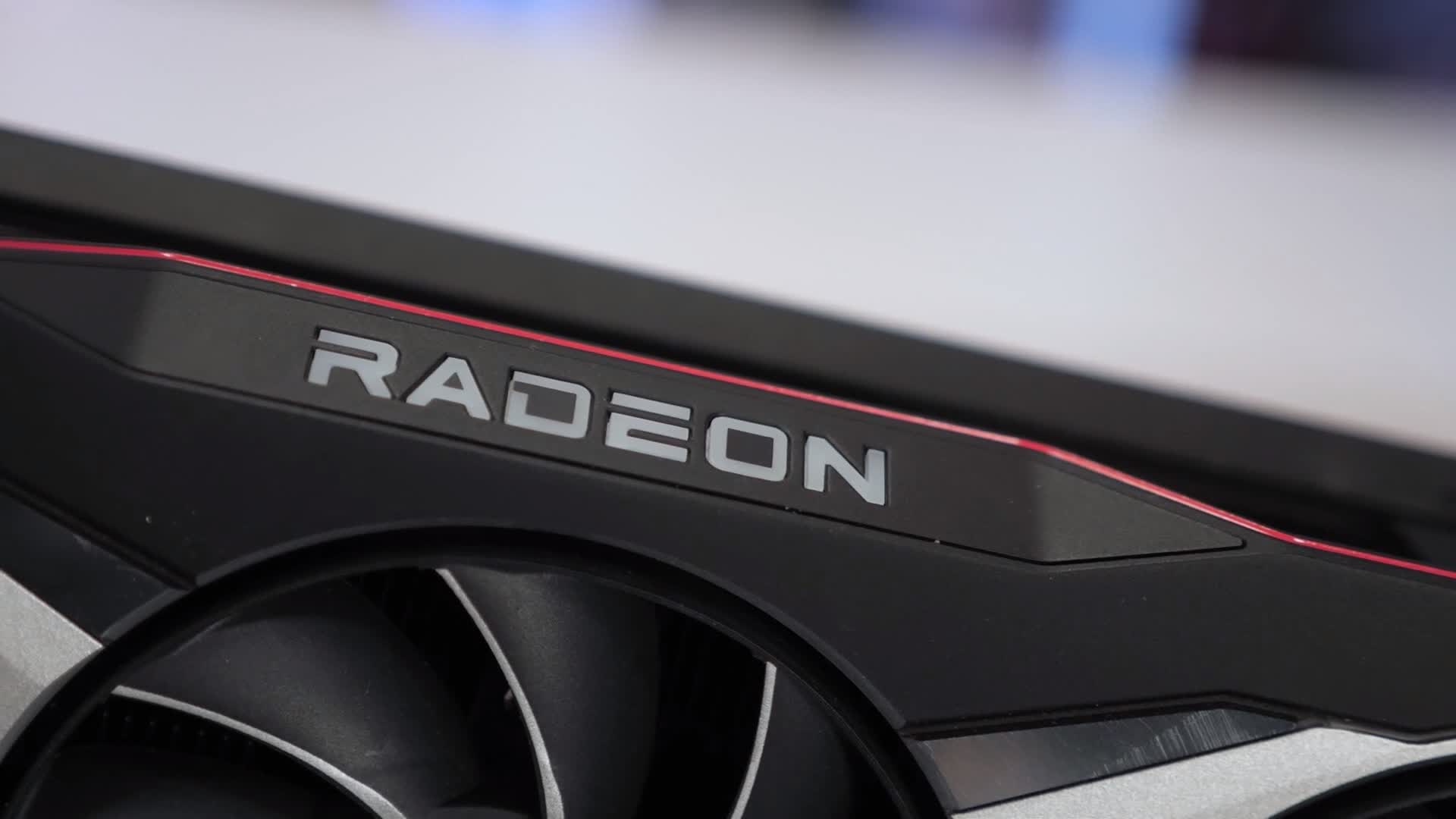Today we're taking an updated and in-depth look at the GeForce RTX 3080 Ti and Radeon RX 6800 XT battle. Granted, pricing for both are disgustingly high, but that's been the theme for 2021 with no end in sight for this situation. It's also well out of our control and while we don't recommend purchasing a gaming graphics card right now, many of you are, and many more of you are sick of waiting.
If you happen to be tossing up between an overpriced 3080 Ti and 6800 XT, this benchmark review should be helpful. This also gives us a chance to look at another board partner version of the 3080 Ti and this one comes for a company we've had a lot of good experiences with in the past, but haven't checked out anything new for quite some time, that company is Gainward.
On hand we have their brand new RTX 3080 Ti Phantom GS, a beastly looking model with triple 8-pin PCIe power inputs, a huge triple slot / triple fan air-cooler and all the essentials like dual-BIOS support.
For all this testing we're using our AMD Ryzen 9 5950X test system with 32GB of DDR4-3200 CL14 dual-rank, dual-channel memory. Both GPUs were tested at 1080p, 1440p and 4K.
We have tested a total of 30 games, so we'll discuss the more interesting results as usual for about a dozen of them and then we'll take a quick look at how these two GPUs compare head-to-head across all games tested in a single graph.
Benchmarks
First up we have Borderlands 3 and here we're looking at very competitive performance between the 3080 Ti and 6800 XT. It's basically identical performance at 1440p and 4K...


The Total War Warhammer II results are a bit all over the place, the 6800 XT does well at 1080p offering a mild 5% performance increase and although it maintains slightly stronger 1% low performance at 1440p, the average frame rate fell behind the 3080 Ti by a 9% margin. Then at 4K the 6800 XT falls well behind the GeForce GPU, now trailing by a rather substantial 26% margin.

Moving on to Death Stranding, the 6800 XT does well at 1080p and even delivers slightly better 1% low performance at 1440p, though the average frame rate ended up being much the same. Then at 4K the 3080 Ti pulled ahead, though only by an 8% margin so overall performance was fairly similar.
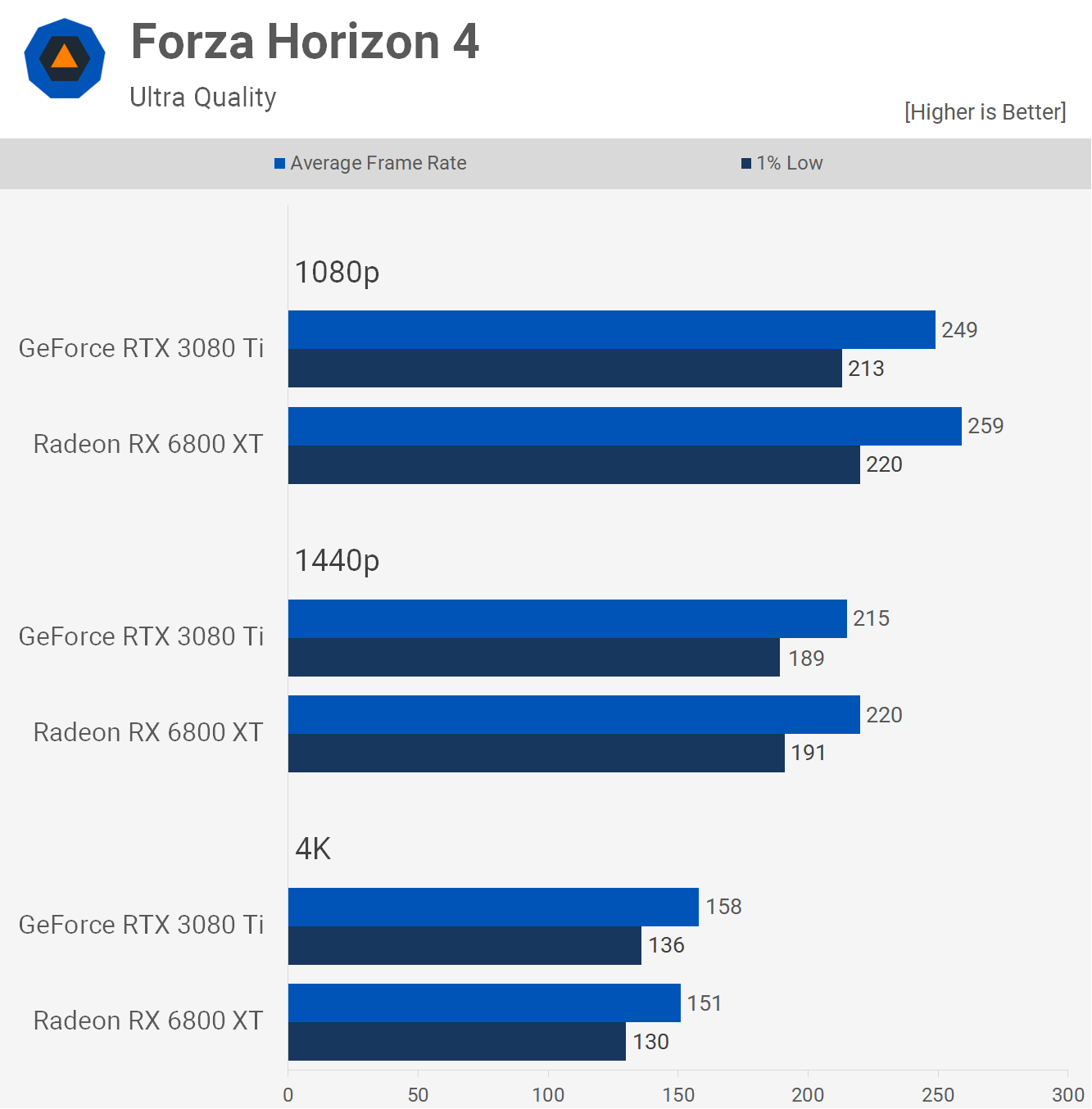
Forza Horizon 4 is still a strong title for AMD and here the 6800 XT lead at 1080p and 1440p while the 3080 Ti nudged ahead at 4K by a 5% margin, so overall performance between these two GPUs was much of a muchness.

Moving on to the Days Gone testing we see that this is a very strong title for Nvidia as here the 3080 Ti enjoyed a 25% performance advantage at 1440p and an even greater 33% advantage at 4K. It's worth noting that the 1% low data was much closer, but this could very well be CPU related and not necessarily an issue with the GeForce GPU.

We tested F1 2021 with ray tracing because it's enabled by default on supported hardware. This improves the performance advantage of the 3080 Ti and although the 6800 XT was still very good at 1440p, the GeForce GPU was much faster offering 25% greater performance, and then 30% more frames at 4K.
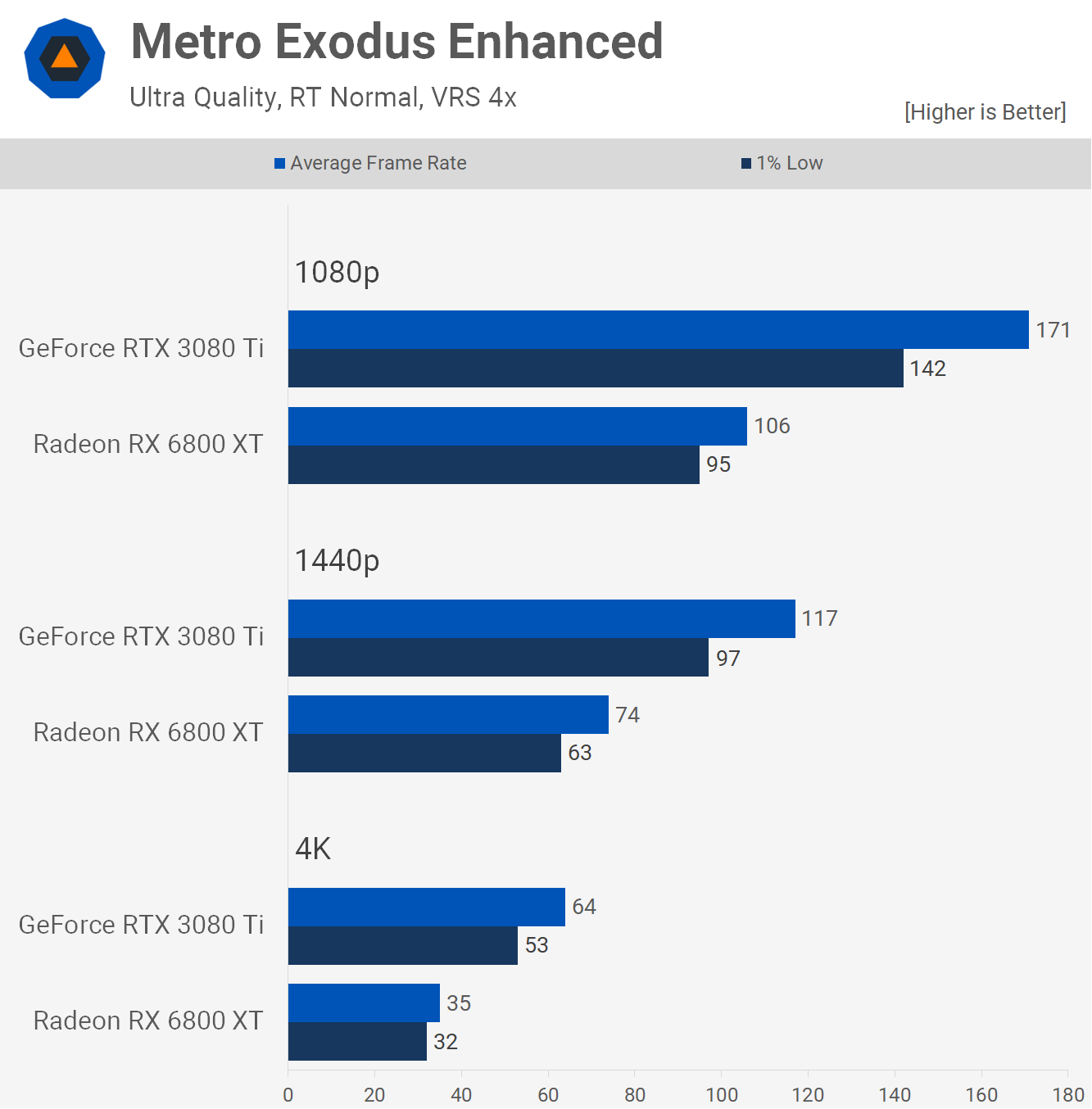
Metro Exodus Enhanced is another ray tracing title and in this case the feature is required to run the game, so you can't disable ray tracing here and so we've gone with the 'normal' setting for testing. This handed the 3080 Ti its biggest win yet delivering 58% more frames at 1440p and an incredible 82% more at 4K.
Worse still for AMD, while the 6800 XT delivered an enjoyable experience at 1440p with an 74fps on average which is enough to enjoy Metro Exodus, the 35 fps seen at 4K was horrible and you'd have to play with the ray tracing effects completely disabled in order to receive an acceptable gaming experience and that means playing the original version of the game.
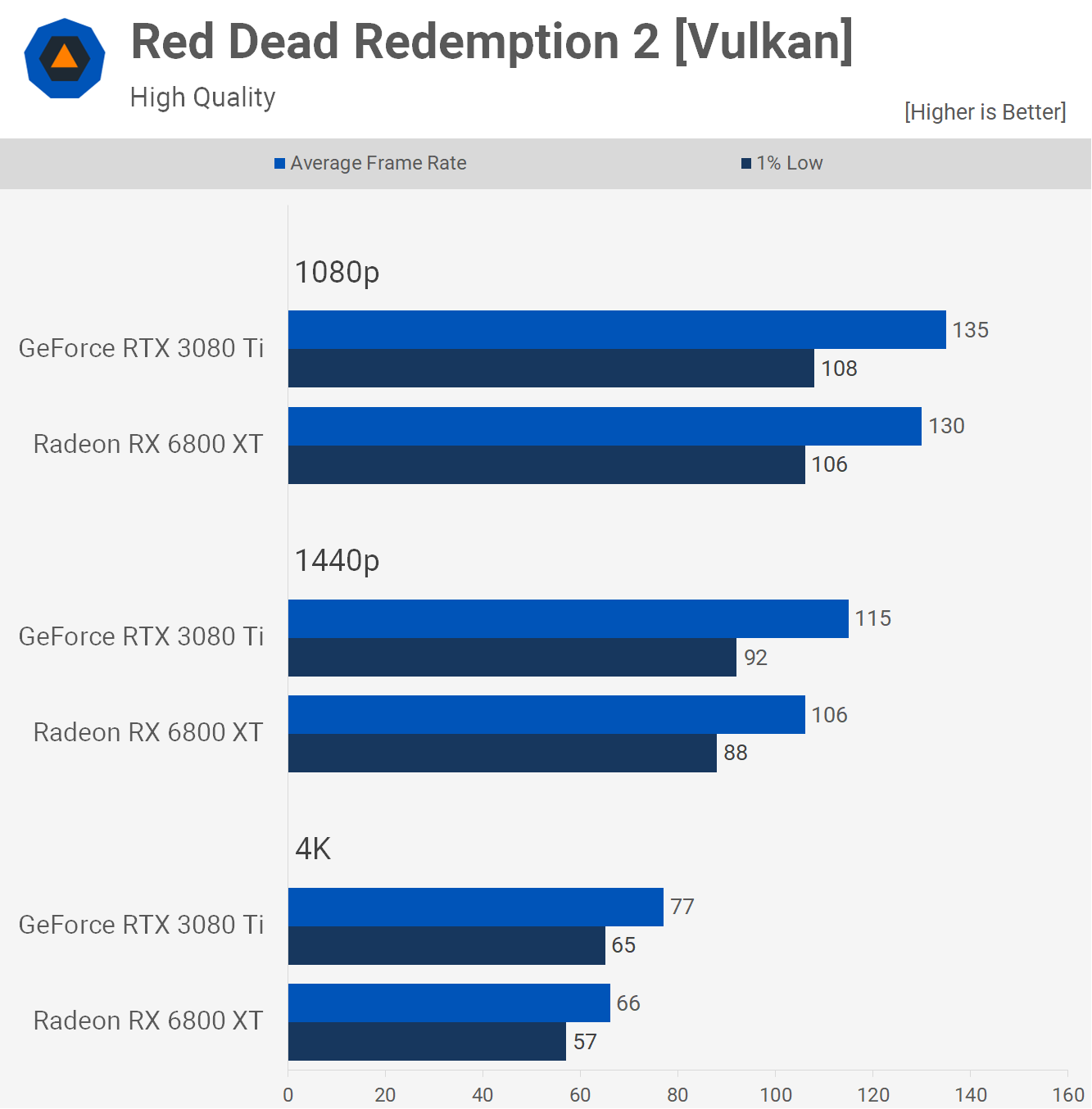
Moving on to Red Dead Redemption 2, we're once again looking at competitive results between these two GPUs. The 3080 Ti was just 8% faster at 1440p, though the margin did blow out to 17% at 4K and this is something we've come to expect. Basically Nvidia's Ampere architecture is best utilized at high resolutions.
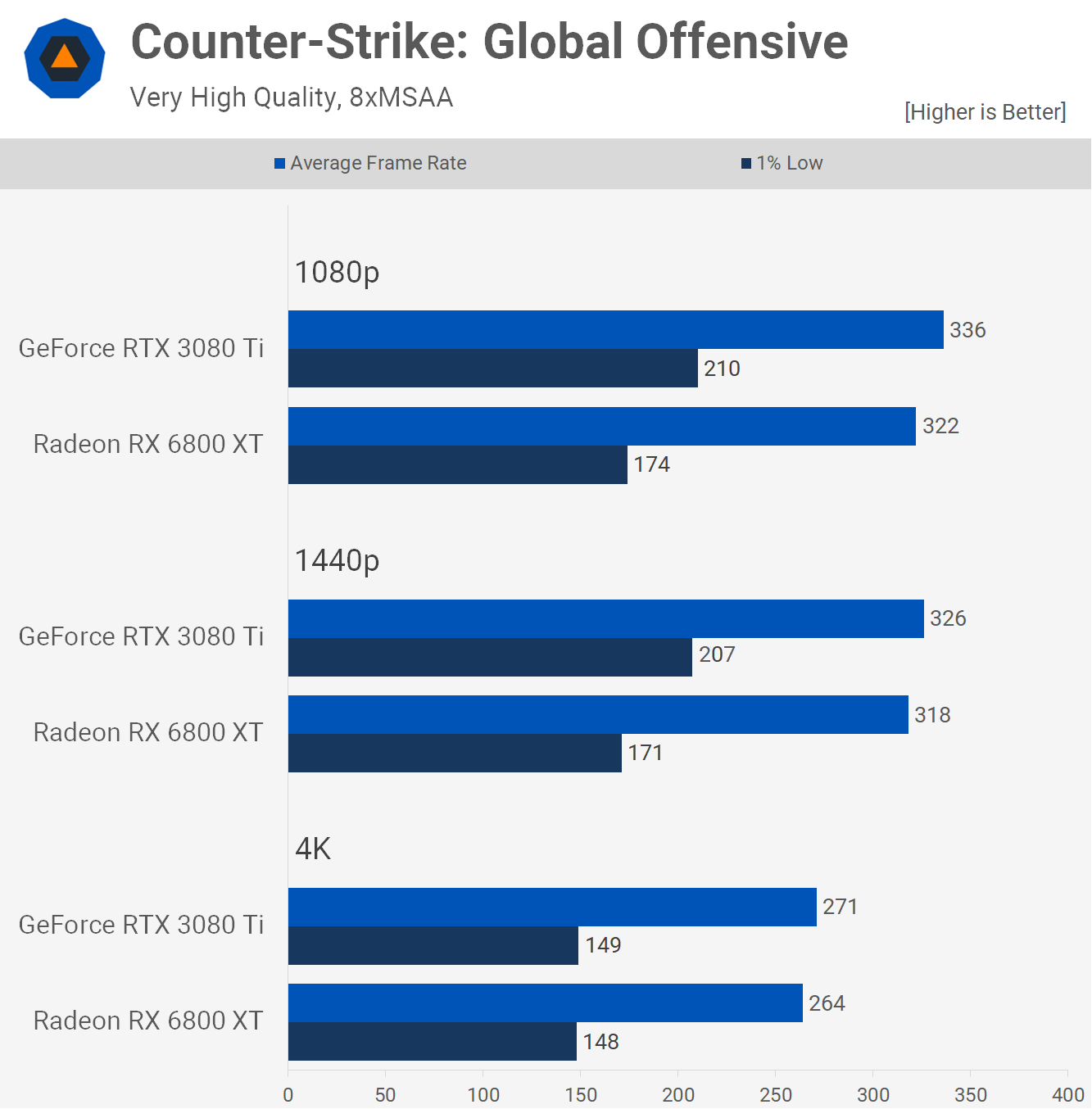
As we said in the 6600 XT vs RTX 3060 comparison, we've included Counter-Strike Global Offensive simply because it's always heavily requested, despite the fact that it runs on a potato and is essentially a CPU benchmark at this point. But given we have 29 other titles to help balance out the results I'm happy enough to include some highly popular tiles like Global Potato, even if you don't need this level of GPU power to run it.

Apex Legends is another popular shooter and this one does require a decent level of GPU power for high refresh gaming at 1440p and above. The RTX 3080 Ti offered 20% more frames at 1440p, which is a serious performance increase and the 25% gain seen at 4K will be huge for those playing on premium 4K 144Hz panels.

The second last game we're going to look at is Outriders and here Nvidia has a reasonable performance advantage delivering 15% more fps at 1440p and 23% more at 4K where crucially it managed to keep the frame rate above 60 fps.

Finally, we have Cyberpunk 2077 and here the 3080 Ti was 14% faster at 1440p and 24% faster at 4K. Obviously, the 4K margin is significant but we were expecting the 3080 Ti to do a little better at 1440p.
Performance Summary
As was to be expected, the GeForce RTX 3080 Ti is the faster of the two GPUs and can be much faster with ray tracing enabled. For those gaming at 4K, the GeForce GPU appeared to be the more obvious choice, but before we draw any hard conclusions let's take a look at the results across all 30 games tested.
For those of you gaming at 1440p, the Radeon RX 6800 XT might offer more value depending on how much you can get this for in your region. But the point is, at 1440p for the most part the 3080 Ti wasn't a great deal faster and as a result ended up delivering 11% more performance on average. For those of you wondering, if we remove the blow out ray tracing results in Metro Exodus Enhanced, the 3080 Ti would be 9% faster on average.

The only games that favor the 6800 XT include Assassin's Creed Valhalla and then Forza Horizon 4 and Borderlands 3 but by a very insignificant margin. For about half of the games tested we saw single-digit performance margins.
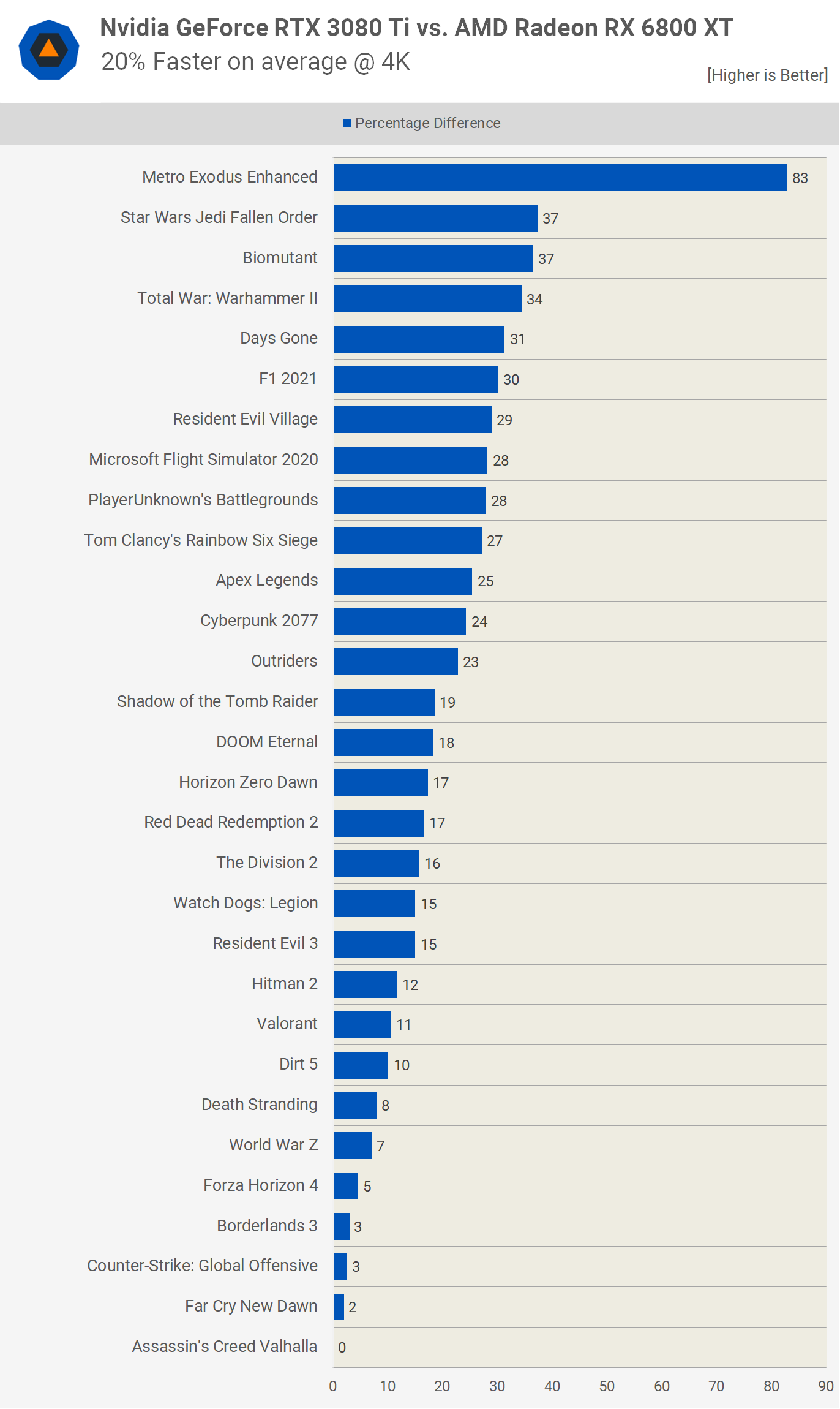
However, if you're planning on gaming at 4K, the results change considerably and from a performance standpoint the RTX 3080 Ti becomes the more obvious choice. On average, the GeForce GPU was 20% faster and that's a significant difference.
Overclocking with the Gainward RTX Phantom GS
Let's take a quick look at how the Gainward RTX 3080 Ti Phantom GS performs. All previous data was based on the Nvidia reference spec, and the same applies to the AMD results. The Phantom GS is factory overclocked and on average clocked at 1845 MHz, which is a small 4% bump than the FE model which is clocked at 1770 MHz on average.
This is a pretty typical factory OC, the Asus TUF Gaming clocked at 1830 MHz under the same test conditions, the MSI 3080 Ti Suprim X sustained 1875 MHz on average and the Asus ROG Strix LC OC averaged 1920 MHz.
In terms of performance, you're looking at Founders Edition-like FPS, so there's no point going over more benchmarks.
However, if we take a closer look at temperature results, in our enclosed test system built in the Corsair Obsidian 5000D, in a 21C room, the Phantom GS peaked at 74C with a 2100 RPM fan speed, and that's only a few degrees better than the Nvidia FE model.
This is decent, but not a great result considering the Asus TUF Gaming peaked at just 64C and was slightly quieter. Still, it's not bad and if the Phantom GS is all you have available then it's well worth considering.
What We Learned
For the MSRP, you may not expect to see a direct comparison between the GeForce RTX 3080 Ti ($1,200) and Radeon RX 6800 XT ($650), but depending on your region, how crazy prices are inflated (e.g. timing), and sheer luck of grabbing some of these in stock, there may not be that much difference in price in relative or even absolute terms.
However, if all GPUs were available at MSRP, then the RTX 3080 Ti would be about the dumbest purchase you could make, dumber than even the RTX 3090 or 6900 XT. Not only that, but the non-Ti RTX 3080 would be the best value high-end GPU: roughly matching the performance of the 6800 XT, while offering all those extra features such as better ray tracing support, and of course, DLSS. So in a normal market, we'd recommend just getting the RTX 3080.
But it's been months since we've seen MSRP pricing, so we'll let go of that for now and focus on the reality in front of us.
In many markets we checked (Australia, the US, parts of Europe), the RTX 3080 Ti is only marginally more expensive than the vanilla RTX 3080 and it's on average 7% to 9% faster, depending on resolution, and of course, you get a 20% increase in VRAM. In such a scenario, the 3080 Ti makes more sense than both the RTX 3080 and 6800 XT, which is bizarre, but that's the way it is.
Meanwhile, you're looking at having to pay ~50% more for the RTX 3090, so at least some things have remained the same, and that's still a no-go GPU for gamers.
As good as AMD's RDNA2 generation is, parts like the Radeon RX 6800 XT need to be offered at a reasonable discount relative to their nearest competitor given they lack the same level of ray tracing performance, and FSR has yet to be widely adopted. Moreover, in its current form FSR isn't as good as DLSS, though that probably applies more to budget products targeting the 1080p resolution.
So there you have it. In a normal market, we'd purchase the GeForce GTX 3080 and in the current market, for the right price the RTX 3080 Ti would get added to our shopping cart.
